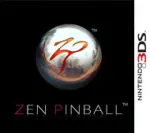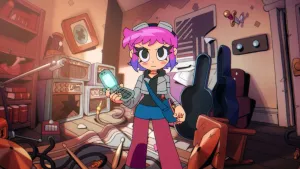Zen Pinball 3D Review

By this point, you've probably heard Game Informer editors wax poetic about Zen Studios' digital offerings. Its faithful digital recreations of pinball have earned the developer several fans in the office, and I'm one of them. That said, the 3DS was the last platform I wanted to play a pinball game on – but it didn't take long for Zen Pinball 3D to change my mind.
My biggest concern with Zen Pinball's transition to the 3DS was the smaller screen size. I often have a hard time seeing table features in Pinball FX 2 on my TV, so I wasn't looking forward to cozying up to a 3.5-inch screen. While some visual detail has been lost in the downsizing, the changes are purely superficial, and I didn't have any problem tracking the ball. The 3D effect is surprisingly helpful for figuring out the layouts of the feature-packed tables, though I preferred turning the effect off during actual play. The ball always seemed tiny regardless of the view, but it didn't affect my timing or overall enjoyment.
Zen Pinball 3D also features improved table guides, which explain each table's various modes and mechanics. Whereas previous versions only featured ambiguous images, instructions are now accompanied by a real-time view of the corresponding place on the table, with arrows pointing to specific features. The table guides only offer basic information, but overall it's a step in the right direction.
While the software has made a solid transition to the 3DS, the handheld itself takes some getting used to. The shoulder buttons are responsive, but cramped by their proximity to the top screen flap, and unless you have the hands of a child, the buttons don't naturally fall underneath your fingertips. The only comfortable position I could find was to hold the system up with my thumbs and index fingers like I was snapping a picture with a camera, at which point things went smoothly. You might get some funny looks from your friends, but if you're having trouble getting a solid handle on the unit, I suggest giving it a try.
The dual screens also complicate things slightly. Zen Studios moved the LED and scoring updates to the bottom screen, leaving the top screen all to the table. The extra information doesn't block the view of the table anymore, but losing your focus and draining a ball is easy when switching screens to read directions on the LED.
Zen Pinball/Pinball FX fans may be disappointed by the table selection. All four tables are a couple of years old by this point; El Dorado and Shaman were original Zen Pinball tables from 2009, and Excalibur and Earth Defense were DLC releases from 2010. They're all still a lot of fun (I enjoy them more than the pack-in tables for the original Pinball FX), but pale in comparison to what the company has been releasing on a regular basis for Pinball FX 2 over the past two years.
I didn't think pinball would work on such a small screen, but I was proven wrong by Zen Pinball 3D. The biggest drawback is the age of the tables, but the core mechanics provide fun and addictive pinball on the go.

Get the Game Informer Print Edition!
Explore your favorite games in premium print format, delivered to your door.
- 10 issues per year
- Only $4.80 per issue
- Full digital magazine archive access
- Since 1991










